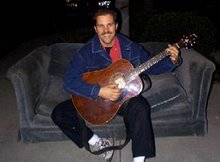
KEEPING THE DREAM ALIVE
The Mt. Taylor Winter Quadrathlon in Grants, New Mexico.
by Richard Graham
“Keep your shoulder to the wheel and your eyes to the stars.” -- Race director Abe Pena, in letter sent to event participants.
Route 66 cuts through the heart of Grants, New Mexico, past boarded-up houses, stores and motels that attest to the town’s current tough economic times. With a population of just 8,700, it’s difficult to believe that up until seven or eight years ago, Grants was a booming uranium-mining town.
Paddy Martinez, an Indian laborer and part-time prospector, discovered uranium near Grants in 1950. The ensuing mining rush almost doubled Grants’ population, to 15,000 residents. Many of the miners had to sleep in pick-up truck camper shells set on blocks at the side of the highway when the influx of workers caught the town short of motel and hotel rooms. But by 1982, it became cheaper to import uranium from foreign countries, and the town came upon hard times.
Grants needed a way to get back on its feet economically. In 1984, Klaus Weber, ski team coach for the University of New Mexico, came up with the idea for a “quadrathlon,” a winter event featuring four events--cycling, running, skiing and snowshoeing. Weber dreamed up the race to promote nearby Mount Taylor as a winter ski area. Snow capped and occasionally cloud-shrouded, the mountain is an extinct volcano just northeast of Grants, an hour’s drive west of Albuquerque. The highest peak in the western part of the state at 11,301 feet, Mount Taylor is considered a sacred place by Navajo Indians.
***
If you'd like to read the rest of this article, please post a comment and I'll be happy to e-mail it to you.
Sincerely,
Richard Graham



 This is a perfect venue for the following article. It's something that I wrote as part of a job-interview requirement.
This is a perfect venue for the following article. It's something that I wrote as part of a job-interview requirement.























